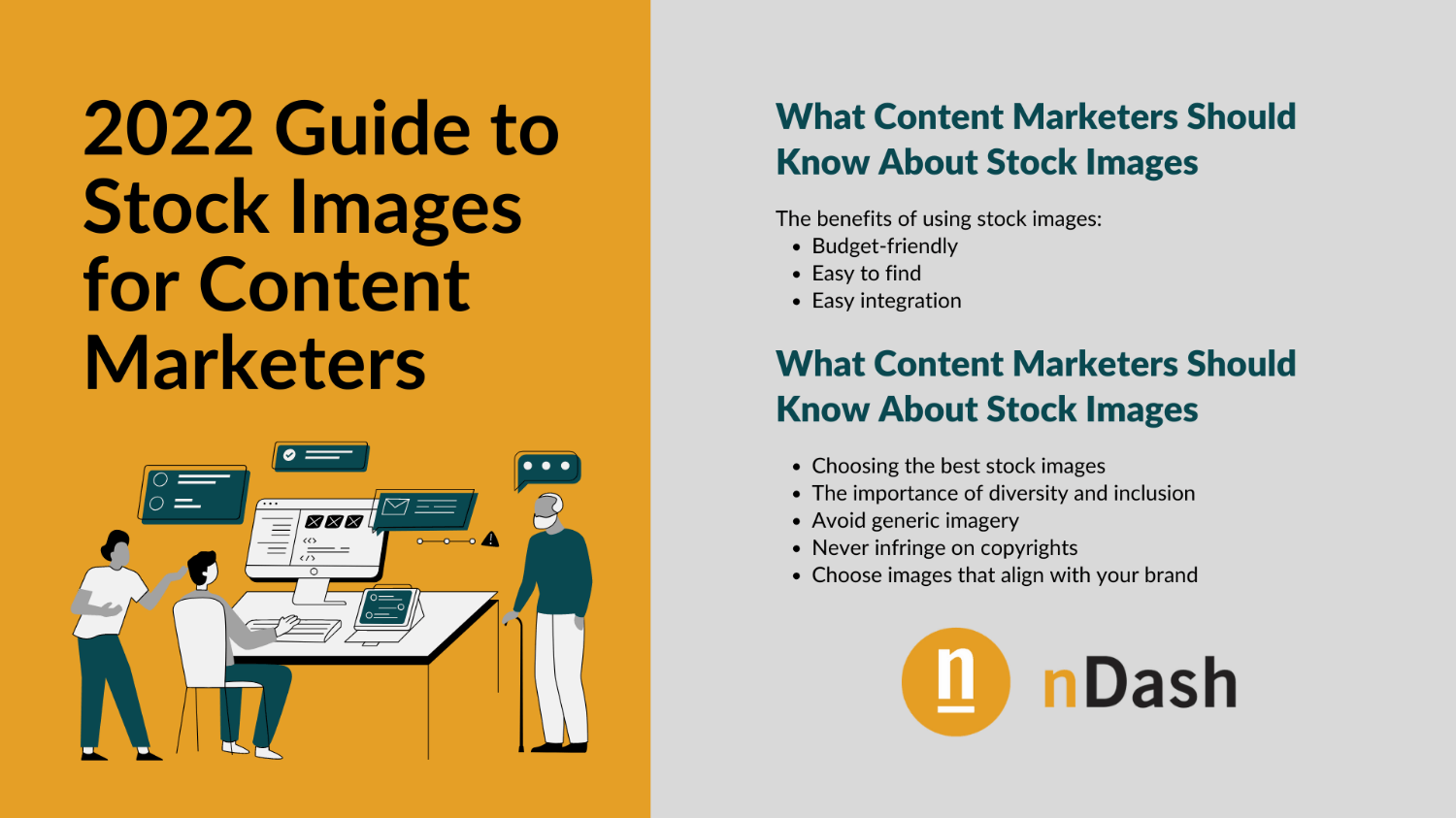While only 29.5% of marketers use stock images regularly in their strategies, 48.2% of all marketing content contains visuals. Those same statistics reveal that 52% of content marketers feel visual content is essential to their content strategy.
What does that mean for your brand and its content strategy? Let’s check that out – this guide dives into what content marketers should know about stock images, how to harness the power of this photography, and other best practices.

What Content Marketers Should Know About Stock Images
While there are many benefits to using stock images in your content marketing efforts, you should also know the cons. Let’s look at the benefits of using stock images first:
- Budget-friendly: High-quality stock imagery is available on many websites, including Pixaby, Rawpixel, and Unsplash.
- Easy to find: When there isn’t enough time to design something using Canva, CorelDRAW, or Adobe, you can search stock photo repositories for what you need in a pinch.
- Easy integration: Upload stock photos to your favorite content editing software to add text and other visuals to help speed up the custom design process for eBooks, PowerPoint presentations, and more.
Here’s an example of how this looks when editing a stock image from Rawpixel on Canva:

Because knowing the advantages and disadvantages of tools and resources is a critical part of any content strategy, let’s look at some potential downsides:
- Generic: While some are high-quality images, others are too generic and could miss the mark of what your brand is portraying.
- Overused: Unfortunately, you’re not the only brand looking at these repositories – so you’ll see popular images repeatedly.
- Too vague: If you’re trying to find an image too quickly – it’ll show because the image won’t relate to the content 100%.
Harnessing the Power of Stock Photography
Remember, when formulating a content strategy, it’s about more than just text. Content includes articles, blogs, infographics, long-form texts, social media posts, videos, webinars, and other assets that support your brand’s strategies. And, with this content, you’ll need high-quality images.
After surveying 90 marketers, most ReferralRock’s respondents indicate that they feel original images better communicate what their brand stands for. However, those statistics also reveal that most of those same respondents feel stock photography images are worth the time needed to find them.
Buzzsumo analyzed over a million articles in 2015, and their research found that content received twice as many shares when an image was posted every 75 to 100 words. While this data is old, it’s still relevant and tells a story marketers should hear. So much so that HubSpot reported this statistic (along with many others) in this post, 50 Visual Content Marketing Statistics You Should Know in 2022.
With these stats in mind, let’s look at some best practices marketers can use to harness the power of stock photography.

Choosing the Best Stock Images
Choosing the best stock images starts by asking yourself two questions – does it convey your brand’s message, and does it fit your brand? Let’s dive into these questions a bit deeper:
- Does it convey your brand’s message? If the image doesn’t contribute to your target audience’s understanding of your brand’s message, you’re less likely to obtain leads or drive engagement.
- Do the stock images fit your brand? If the stock images don’t enhance your brand, you’re missing out on opportunities to tell your company’s story.
The Importance of Diversity and Inclusion
Embracing the importance of diversity and inclusion when selecting stock images widens your reach and ensures that your message reaches everyone in your target audience. That includes images depicting more than one body shape, gender, skin tone, culture, and other differences. We don’t live in a “cookie-cutter” one size fits all society, so your brand’s images should cater to that.
Here are some great resources for diverse image collections:
Avoid Generic Stock Imagery
You’re doing your brand a disservice when using generic stock imagery. It shows your visitors on your blog, social media, and anywhere else they see your content that you’re cutting corners. Instead, feature engaging, interesting, and relevant images. Otherwise, you’re missing an opportunity to show your audience your brand’s unique personality and how you’re setting yourself apart from the competition.
Never Infringe on Copyrights
Selecting creative commons stock photos is an excellent way to ensure you’re not infringing on copyrights. Giving the image creator credit is another step you can take to ensure you’re following the license terms they set. Keep in mind, though, that posting an image credit doesn’t necessarily mean you have permission to post the image. If you read “All Rights Reserved,” you must obtain explicit consent or license before using that image.
Choose Images That Align with Your Brand
Choosing images that align with your brand starts with your target audience. Who are they, what do they look like, do you know their pain points, and what will they respond to the most? Visualizing who these people are and how you can solve their problems can give you a better idea of which images they’ll engage with on blog posts, social media, and other marketing materials.
Choosing the best stock images for your marketing assets is more than scrolling through repositories and downloading random photos. It requires content marketers to select the best stock images, understand the importance of diversity and inclusion, avoid generic photos, understand copyright, and choose visuals that align with their brand.
